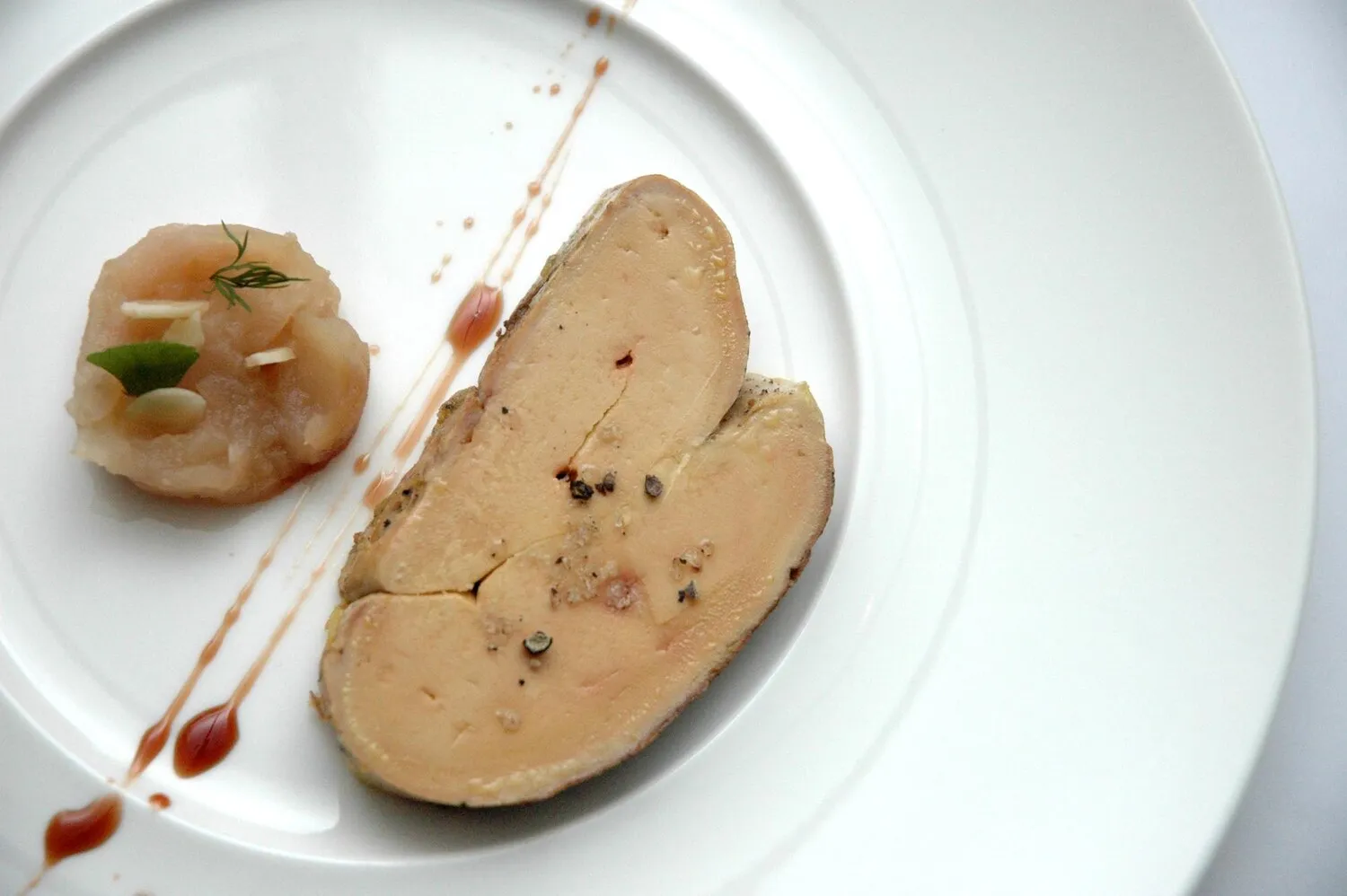
Amuse-bouche
Chez TJ usually begins the tasting menu with a series of amuse-bouches, small, palate-awakening bites that give a preview of the chef's style and the meal to come. These change frequently.
Nutrition Facts
* The % Daily Value (DV) tells you how much a nutrient in a serving of food contributes to a daily diet. 2,000 calories a day is used for general nutrition advice.
The amuse-bouche, meaning 'mouth amuser', evolved from the elaborate presentations of haute cuisine in the 19th and early 20th centuries, becoming a more concise and focused prelude to the meal during the Nouvelle Cuisine movement. It represents a shift towards lighter, more experimental culinary experiences.
The amuse-bouche holds a significant place in fine dining culture, serving as a chef's introduction and statement of intent. It's a demonstration of skill, creativity, and attention to detail that sets the tone for the entire meal.
Hospitality and Generosity
The offering of an amuse-bouche is a gesture of hospitality from the restaurant, signaling a commitment to providing an exceptional dining experience.
Chef's Signature
It allows the chef to showcase their unique style and culinary expertise, often highlighting innovative techniques or unusual ingredient combinations.
Palate Cleanser and Awakener
The amuse-bouche prepares the diner's palate for the courses to come, stimulating the appetite and enhancing the enjoyment of subsequent dishes.
Fine Dining Expectation
In many high-end restaurants, the amuse-bouche is an expected part of the dining experience, contributing to the overall sense of luxury and refinement.
The flavors of an amuse-bouche are often a concentrated burst of contrasting tastes designed to stimulate the palate. Textural variety is also a key element.
Common flavor profiles include salty and sweet combinations (e.g., prosciutto-wrapped melon), acidic contrasts (e.g., ceviche with citrus), and umami-rich components (e.g., mushroom duxelles tartlets). Ingredients are typically high-quality, seasonal, and visually appealing, often showcasing a restaurant's culinary philosophy. Examples include miniature soups, flavored mousses, savory macarons, and single-bite canapés.
Flavor Balance is Crucial
Ensure the flavors are well-balanced, avoiding overwhelming or clashing tastes. Consider contrasting elements like sweet, sour, salty, and bitter.
Presentation Matters
Pay close attention to the visual presentation. The amuse-bouche should be aesthetically pleasing and inviting, often using vibrant colors and artful arrangements.
Keep it Bite-Sized
It should be small enough to be consumed in one or two bites, allowing for a concentrated burst of flavor without being overwhelming.
Consider Dietary Restrictions
Be mindful of potential dietary restrictions and allergies, offering alternative options when necessary. Communicate ingredients clearly to diners.
Seasonality is Key
Utilize fresh, seasonal ingredients to maximize flavor and freshness. Showcase the best of what's available at the time.
Explore additional Modern dishes and restaurants
Explore ModernDiscover top dining spots and culinary experiences in San Jose.
Explore San JoseLearn more about the food culture, restaurant scene, and culinary heritage of United States.
Explore United States